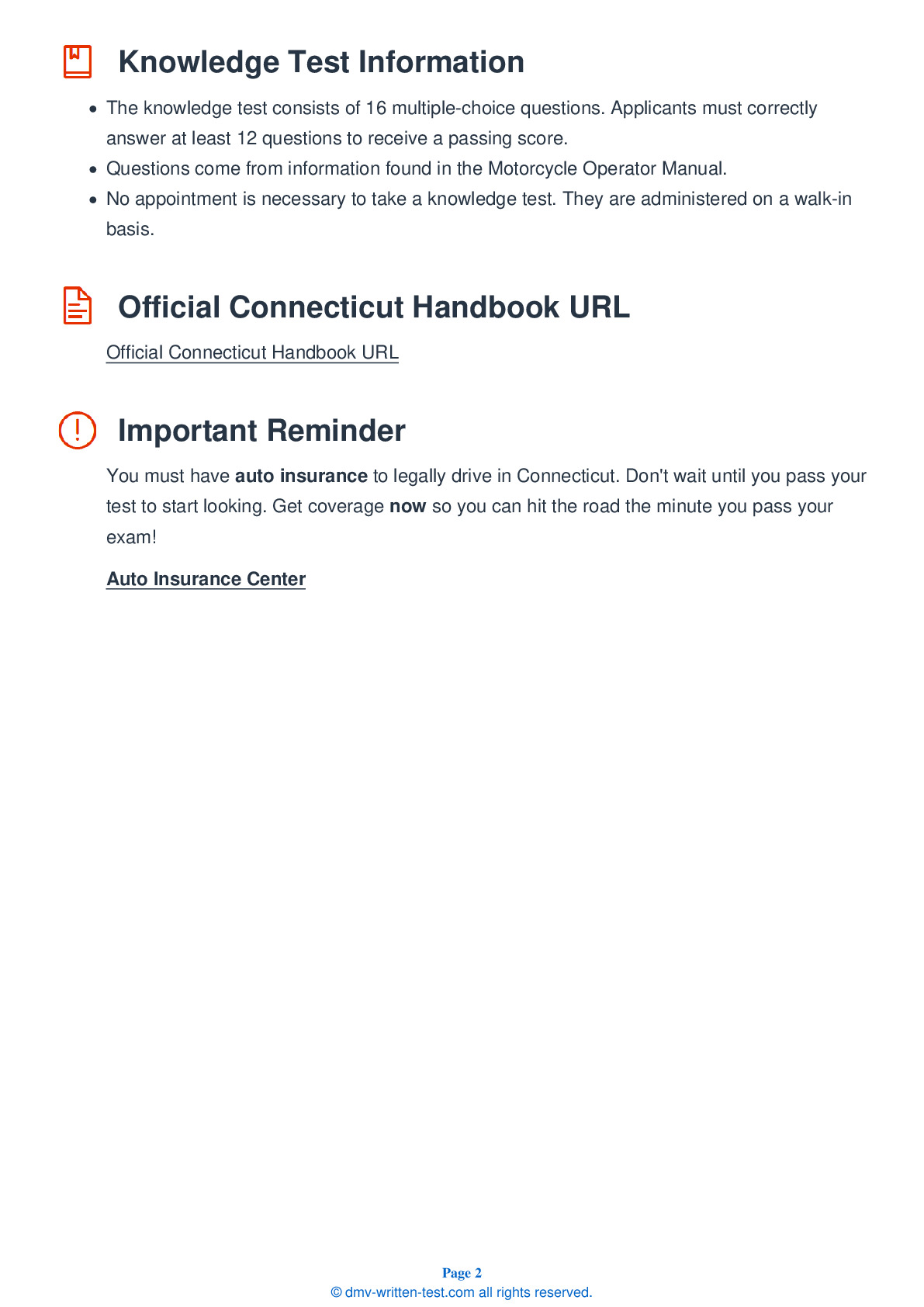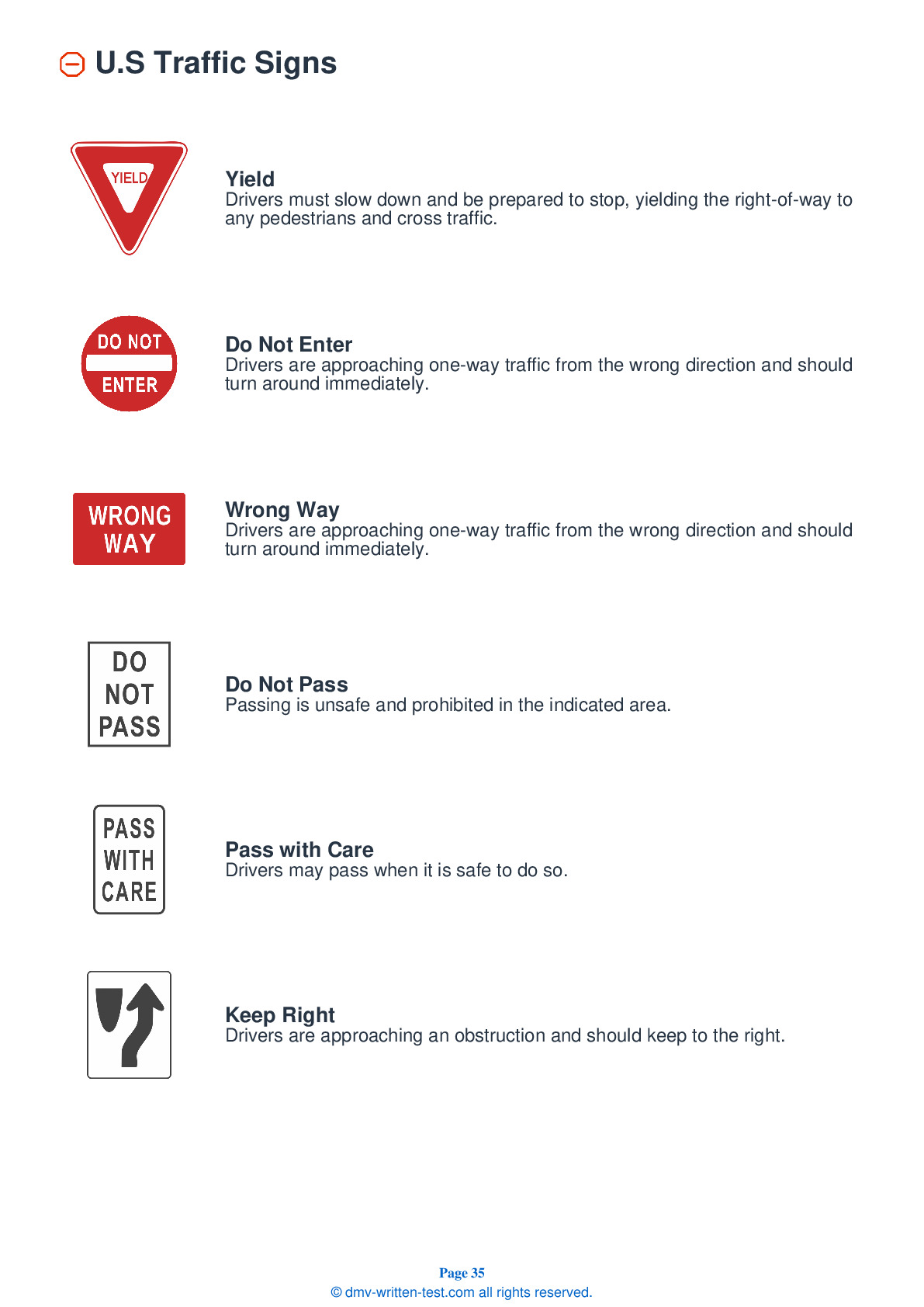2025 Connecticut Motorcycle Permit Test 2
The following questions are from real DMV written motorcycle permit tests. These are some of the actual permit questions you will face in Connecticut when getting your motorcycle learners permit. Each motorcycle theory practice test question has three answer choices. Select one answer for each question and select "grade this section." You can find this button at the bottom of the drivers license quiz. For a complete list of questions and answers for Connecticut please visit https://cheat-sheets.dmv-written-test.com/en/connecticut/motorcycle.
Number of Tests
Number of Question
Passing Score
11. Riding at night:
Explanation
You should wear reflective materials when riding at night to make yourself more visible to other road users.
12. Most motorcycles:
Explanation
Motorcycles generally have two brakes, one for the front wheel and one for the rear wheel.
13. As a motorcycle operator, you can help others see you by:
Explanation
To increase your chances of being seen, wear brightly-colored clothing, use your headlight at all times, and use your turn signals.
14. Before mounting your motorcycle, perform all of the following checks, except:
Explanation
Before riding, you should check the pressure and condition of your tires; check the oil and fluid levels; and make sure that the low beam headlight, high beam headlight, taillight, signal lights, and brake light all work properly.
15. Which of the following does not offer protection to a motorcycle rider?
Explanation
To protect yourself against injury, you should wear a DOT-compliant helmet; face or eye protection; a jacket and long pants made of sturdy material; boots or shoes that are high and sturdy enough to cover and support your ankles; and gloves made of durable material.
16. When riding in traffic, it is important to remember that motorcycles:
Explanation




